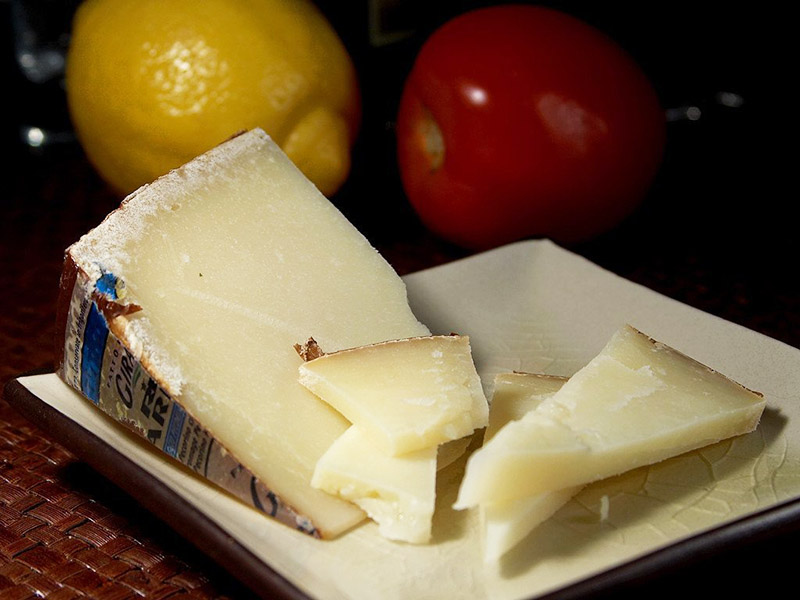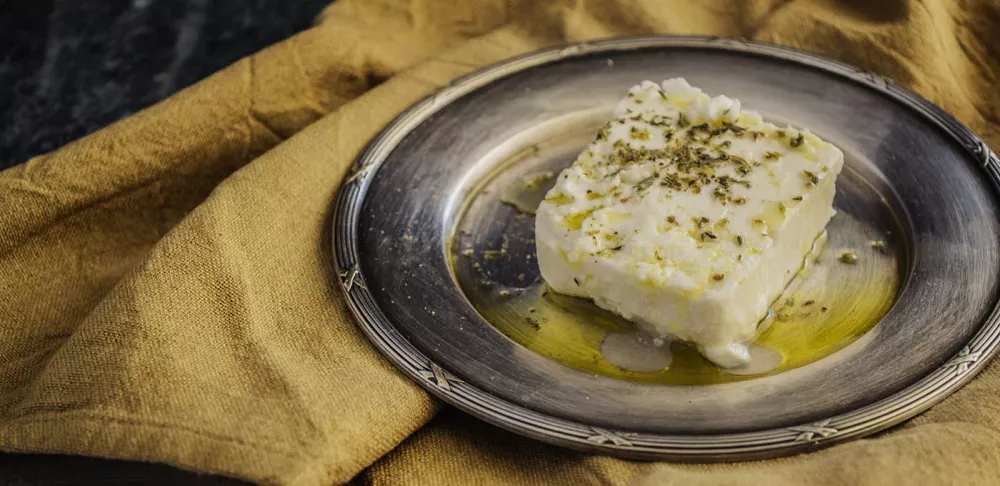While sheep’s milk cheese might seem less familiar to you than goat or cow’s milk cheese, you’ve probably had it more often than you realize.
Several of the world’s most popular and accessible cheeses are made from sheep’s milk: feta, manchego, and pecorino, to start, as well as such iconic cheeses such as France’s Roquefort and Spain’s Torta del Casar.
Sheep’s milk cheeses can be chameleons in the world of cheese, however, as they don’t have a telltale color like the bright white of goat’s milk that sets them apart, and neither do they have a distinct tang. Once you get to know sheep’s milk cheese, however, you will always be able to pick them out of a lineup.
Here we discover some of sheep milk cheese’s unique characteristics.
Related Reading:Understanding Goat Cheese
History of Sheep’s Milk Cheese
Similar to goat’s milk, sheep’s milk has a longer history in cheesemaking than does cow’s milk, even though the majority of cheese consumed in the U.S. presently is made from cow’s milk.
Unlike domesticated cows, which were historically often used as labor animals rather than dairy animals, sheep are believed to have been milked for human consumption for thousands of years. A passage in Homer’s "The Odyssey," published in the 8th century BC, describes a scene in what appears to be a sheep dairy, where the milk of sheep is curdled and pressed in baskets — likely the origins of what we now know as feta cheese.
The Language Of Sheep’s Milk Cheese
Sheep’s milk cheeses are actually easy to pick out simply by learning the word for “sheep” in the languages of several other countries where cheese is made.
Pecorino simply means “little sheep” in Italian, and doesn’t necessarily refer to a singular style of cheese as much as any cheese made from sheep’s milk around the country. Several Italian pecorinos have PDO status, however, including Pecorino Romano, Pecorino Toscana, Pecorino Sardo and Pecorino Siciliano. While we know pecorino typically as the firm, salty cheese responsible for creating iconic pasta dishes such as cacio e pepe, Italian pecorinos are often made in younger, creamier styles as well.
Similarly, the word for sheep in French is brebis, and knowing this it can make it easy to pick out several sheep’s milk cheeses from France such as Pyrenees Brebis, Brebirousse d’Argental and Brebicet.
This labeling practice is less common in Spain, however manchego is named for the breed of sheep — manchega — whose milk creates the cheese. One Dutch, gouda cheese made from sheep’s milk is called Ewephoria, a pun that only works in English as it was crafted for the American market, but nonetheless cleverly identifies the milk as being sheep.

Flavor and Texture of Sheep’s Milk Cheese
Among animal milks that are commonly used for cheesemaking, sheep’s milk often has the lowest yield, but contains the highest amount of butterfat and calcium, meaning there is more solid material available to turn to curd, so the lower yield doesn’t automatically mean a higher price.
While the additional calcium content can make sheep’s milk cheese resistant to contamination, the higher fat content — nearly twice as much as that of cow’s milk — not only contributes to sheep milk cheeses’ rich texture, but offers one of the telltale signs of a sheep’s milk cheese: sweat. (You would, too, if you were wearing a wool sweater in all kinds of weather.) When sheep’s milk cheeses are tempered, that is, brought to room temperature for serving, they often glisten or appear to precipitate as fat globules in the cheese change from a solid to a liquid state. You need not be concerned that this indicates anything wrong with the cheese. In fact, at the cheese store where I often teach, the expression for sheep’s milk cheese is, “when it’s sweaty, it’s ready.”
While sheep’s milk cheese might have a more noticeable tang than cow’s milk cheese, it’s not quite the telltale tang of goat’s milk. As sheep’s milk is used to create many varieties of cheese, the flavor spectrum can be vast, but certain characteristics often point to sheep’s milk such as an earthy, grassy or even smokey note. For me the most salient characteristic of sheep’s milk cheese is its starchiness, with an aroma and flavor that’s almost reminiscent of plain pasta.
Sheep’s Milk Cheese Beyond Feta
Artisanal sheep’s milk cheese is readily available all over the U.S. Besides feta, pecorino and the many sheep’s milk cheeses listed above, here are several others to look out for:
Meredith Dairy Sheep & Goat Cheese, a creamy, savory, marinated feta-style cheese produced in Australia from mixed milk. (Seek this out if you can. Many a cheesehead consider it one of their top cheeses, and the leftover oil used to marinate the cheese has a myriad of culinary uses.)
Ossau-Iraty, a firm but creamy sheep’s milk cheese produced in the Basque region of France, and often served with preserved cherries as a dessert course.
Vermont Shepherd Invierno, a woodsy cheese from Vermont aged during the winter months with a rich and hearty texture.
Idiazabal, a buttery, Spanish, sheep’s milk cheese that is lightly smoked.






